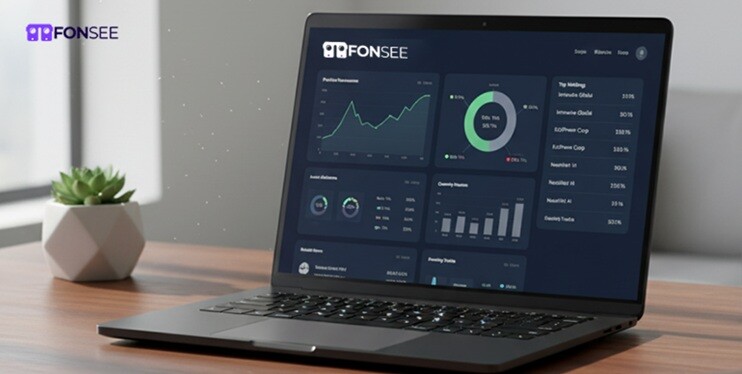Streaming apps use sophisticated algorithms to keep kids glued to screens, but most parents don’t realize how these systems actually work or why they’re so effective at capturing young minds. This guide is for concerned parents who want to understand what’s happening behind the scenes when their children watch YouTube, TikTok, Netflix, and other streaming platforms.
Your kids aren’t just watching random videos – they’re being fed content specifically chosen to maximize watch time and engagement, often leading them down rabbit holes of inappropriate or addictive material. Regular screen time limits and basic parental controls aren’t enough to combat these smart algorithms that adapt faster than traditional safety measures can keep up.
We’ll explore how streaming app algorithms specifically target children’s developing brains and why standard parental controls often fail against these advanced systems. You’ll also discover how monitoring tools like TheOneSpy and FonSee can help you stay ahead of algorithm manipulation and create a comprehensive digital safety plan that actually works in today’s streaming-dominated world.
How Streaming App Algorithms Target Your Children

Data Collection Methods Apps Use on Young Users
Streaming platforms quietly gather extensive data about children through device fingerprinting, viewing patterns, search queries, and interaction timestamps. They track pause points, rewind frequency, and even how long children hover over certain thumbnails before clicking.
Personalized Content Recommendations That Shape Behavior
Algorithms create detailed psychological profiles of young users, serving increasingly intense content to maintain engagement. These systems identify emotional triggers and content preferences, gradually pushing children toward more stimulating material that keeps them glued to screens longer.
Time-Based Triggers That Increase Screen Addiction
Apps deploy sophisticated timing mechanisms that learn when children are most vulnerable to extended viewing sessions. Push notifications arrive during homework time or bedtime, while autoplay features eliminate natural stopping points that would allow kids to disengage.
Hidden Psychological Tactics in Algorithm Design
Streaming services employ variable reward schedules similar to gambling mechanics, creating unpredictable content surprises that trigger dopamine responses. Color psychology, thumbnail design, and progression systems manipulate children’s developing brains, making it extremely difficult for young users to self-regulate their viewing habits.
The Dark Side of Algorithm-Driven Content for Kids

Exposure to Age-Inappropriate Material Through Recommendations
Streaming algorithms push content based on viewing patterns, not actual age appropriateness. A child watching cartoon clips can suddenly receive recommendations for mature animated series with violence or adult themes. These systems prioritize engagement over safety, creating dangerous pathways where innocent searches lead to disturbing content that bypasses parental filters.
Echo Chambers That Limit Educational Content Discovery
Children get trapped in narrow content bubbles that repeatedly reinforce the same topics. When kids watch gaming videos, algorithms flood them with similar content while educational materials become invisible. This creates intellectual stagnation, as children miss opportunities to explore science, history, or the creative arts, limiting their cognitive development and curiosity about the world around them.
Why Traditional Parental Controls Fall Short Against Smart Algorithms
Algorithms Adapt Faster Than Static Filtering Systems
Traditional parental controls rely on predetermined filters that can’t keep up with the speed of modern streaming algorithms. These systems update content recommendations in real time based on user behavior, whereas most parental control software operates on fixed rules set months ago. When algorithms detect engagement patterns, they immediately adjust content delivery, often finding creative ways around static blocking mechanisms.
Content Classification Gaps That Bypass Safety Measures
Many streaming platforms use automated content tagging that misses subtle but harmful elements in videos. A cartoon might receive a “kid-friendly” rating while containing inappropriate themes, violence, or adult references that slip through automated detection systems. These classification errors create blind spots that traditional controls can’t identify, allowing unsuitable content to reach children under the guise of age-appropriate material.
Cross-Platform Data Sharing That Undermines Individual App Controls
Streaming services often share user data with third-party partners, creating profiles that extend beyond single applications. Even if parents block certain content on one platform, algorithms can access behavioral data from other apps to circumvent these restrictions. This interconnected ecosystem means that controlling one app doesn’t prevent others from serving similar problematic content through shared user insights.
Real-Time Content Generation That Escapes Pre-Screening
User-generated content and live streaming features create material that bypasses traditional pre-screening processes. Algorithms prioritize real-time content based on engagement metrics rather than safety standards, allowing harmful material to reach children before human moderators review it. Traditional parental controls struggle with this dynamic content creation, as they’re designed to filter existing, categorized material rather than newly generated streams.
The OneSpy Features That Counter Algorithm Manipulation

Advanced Content Monitoring Across Multiple Streaming Platforms
TheOneSpy operates across major streaming services like YouTube, TikTok, Netflix, and Disney+, tracking content consumption patterns that traditional parental controls miss. The software captures detailed viewing histories, including recommended content queues and algorithm-suggested videos that appear in your child’s feed. This comprehensive monitoring reveals how algorithms shape your child’s digital experience, giving you visibility into content they encounter beyond just what they actively choose to watch.
Real-Time Alert System for Suspicious Algorithm Behavior
Smart notifications activate when algorithms begin pushing inappropriate content toward your child’s account. TheOneSpy identifies sudden shifts in recommendation patterns, such as when gaming content escalates to violent themes or when educational videos transition into adult-oriented material. The system flags these algorithmic manipulations instantly, allowing parents to intervene before harmful content becomes normalized in their child’s viewing habits.
Comprehensive Screen Time Analysis with Algorithm Impact Assessment
Beyond basic usage tracking, TheOneSpy analyzes how algorithms influence your child’s screen time patterns. The platform identifies “rabbit hole” scenarios where recommendation engines keep children engaged far longer than intended, often leading them away from age-appropriate content. This analysis reveals a correlation between algorithm-driven suggestions and increased device addiction, helping parents understand when their child’s extended screen time results from a manipulative design rather than genuine interest.
Remote Control Capabilities to Override Algorithm Suggestions
Parents can actively intervene in their child’s streaming experience by using remote-control features to block specific recommendations or reset algorithm preferences. TheOneSpy lets you clear recommendation histories, pause autoplay, and redirect content suggestions to educational or family-friendly alternatives. These controls operate invisibly, preventing children from recognizing parental intervention while gradually training algorithms to suggest more age-appropriate content.
How FonSee Provides Additional Protection Layers

Deep App Activity Tracking Beyond Surface-Level Controls
FonSee goes deeper than basic screen time limits by monitoring how algorithms actually engage with your child’s behavior patterns. The platform tracks micro-interactions, such as pause durations, replay frequencies, and scroll speeds, that reveal attempts at algorithmic manipulation. This granular data shows exactly when streaming apps are pushing addictive content loops designed to maximize watch time.
Algorithm Pattern Recognition for Proactive Threat Detection
The software identifies suspicious algorithmic behavior before it escalates into serious problems. FonSee’s detection system recognizes when apps are gradually introducing inappropriate content through seemingly innocent recommendations. By analyzing viewing progression patterns, parents receive early warnings about potential algorithm-driven content drift that could expose children to harmful material.
Detailed Reporting on Content Consumption Trends
Parents get comprehensive analytics showing how streaming algorithms influence their child’s preferences over time. These reports highlight concerning trends like increasing violent content exposure or algorithm-driven rabbit holes leading to inappropriate communities. The detailed breakdowns help parents understand exactly how their child’s digital consumption patterns are being shaped and manipulated by sophisticated recommendation systems.
Implementing a Complete Digital Safety Strategy
Combining Technology Solutions with Open Communication
Parents need both technological tools and honest conversations to protect kids from algorithmic manipulation. While monitoring apps like TheOneSpy and FonSee track digital activity, regular discussions about online experiences create trust and awareness. Children who understand why certain content appears in their feeds become more critical consumers of algorithm-driven recommendations.
Setting Up Effective Monitoring Without Invading Privacy
Smart monitoring focuses on patterns rather than every single interaction. Parents should track time spent on specific apps, content categories viewed, and mood changes after screen time without reading every message. This approach identifies concerning algorithmic influences while respecting children’s developing autonomy and maintaining family trust.
Creating Family Digital Wellness Plans That Account for Algorithm Influence
Successful digital wellness plans establish clear boundaries around algorithm exposure. Families should schedule regular “algorithm breaks” where children engage with pre-selected content instead of recommended feeds. These plans include designated device-free zones, specific times for educational versus entertainment content, and alternative activities that compete with the instant gratification algorithms provide.
Regular Assessment and Adjustment of Protection Measures
Digital safety requires constant adaptation as algorithms evolve and children mature. Monthly family meetings should review screen time reports, discuss new apps or content interests, and adjust monitoring settings accordingly. Parents must stay informed about algorithm updates across platforms and modify their protection strategies to address emerging risks while gradually increasing children’s digital independence.
Conclusion:
Your kids are getting served content you never approved of, and those smart algorithms are working around basic parental controls like they’re not even there. The streaming platforms know exactly how to keep young eyes glued to screens, often pushing content that’s inappropriate or potentially harmful. Regular content filters just can’t keep up with how these algorithms learn and adapt, finding new ways to capture your child’s attention.
This is where tools like TheOneSpy and FonSee become game-changers for parents who want real control. These apps give you the ability to see what’s actually happening on your child’s device and step in when those sneaky algorithms cross the line. Don’t wait until you stumble across something disturbing in your kid’s watch history. Set up comprehensive monitoring today, combine it with honest conversations about online safety, and take back control from the algorithms that see your children as nothing more than engagement metrics.
You may also like to read,







